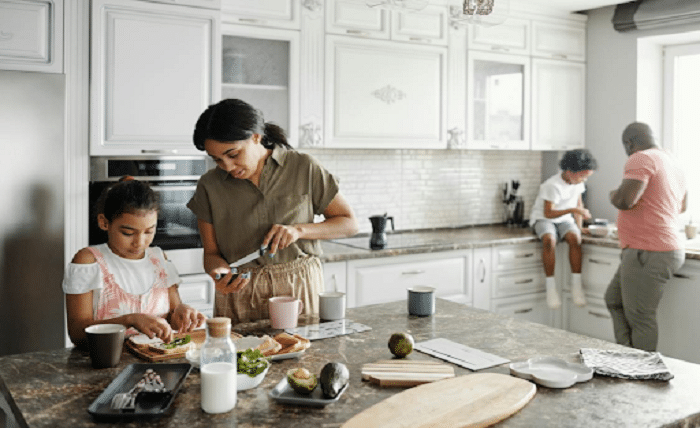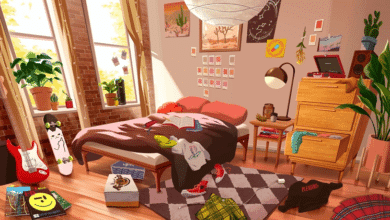Minimalist Kitchen Designs: Functionality, Style, and Best Kitchen Sinks

The recent popular craze in house design is the adoption of the minimalism concept, which means stripping down to the basic form. It is a philosophy you can broadly apply in your general perspective to your life. Once you follow this philosophy, it will appear in all areas of your life – including physical spaces.
Modern minimalism is one of the most common trends in interior design. Ask anyone who is planning to either build a house or do a renovation and more often than not, they will tell you that they would want to have a minimalist design. Minimalist interior design aims to create a simple and clutter-free space using the bare essentials.
Unlike other interior designs, minimalist designs are distinguishable by their simplicity, monochromatic themes, and clean lines. It usually involves having an open floor plan and good lighting, and every piece of furniture serves a purpose – not just for display. Despite its simplicity, minimalism has gained popularity because of its many advantages – it gives the area more space and light, less clutter, and is easier to clean and maintain. Click here for a good read about the benefits of modern minimalism.
In addition, this can also be great for one’s budget because of its approach to lean furniture and décor. And most importantly, it gives the homeowners a relaxing and calming atmosphere. Now, who wouldn’t crave the comfort of that sanctuary after a hard day’s work?
If you are thinking of renovating your kitchen with a minimalist design in mind, here are some elements that you should consider:
Element 1: Clean and sleek design. Since the kitchen would probably be one of the busiest areas of your house, in a minimalist kitchen design – sobriety is key. It should have clean lines and smooth surfaces and be free of patterns and shapes.
Modern minimalist house designs usually have flat, smooth, and firm surfaces with clean lines, which create bold statements that emphasize the essential nature of each item. There are no patterned designs or accessories that are highly detailed. The benchtops and surfaces are clear and clean, with bare walls and minimal artwork. The design should also focus on organized drawers, solid-colored utensils, and a labeled pantry.
Element 2: Open Shelving
As one of the main goals of minimalism is to avoid visual clutter, having open shelves where you can easily access frequently used tools and kitchen products is an essential element. By having open shelves, one will have flexibility and more openness in the design, which gives out a more natural and modern feel. This site has listed down great inspirations for open-shelf designs that could fit perfectly in your home: https://www.thespruce.com/styling-tips-for-kitchen-shelves-1791464
Element 3: Functional lighting
Good lighting is standard in minimalist designs – which involves plenty of natural light and basic lighting fixtures. This is also good for the environment, as having more natural light coming in and using less energy on lights lessens your carbon footprint. For natural lighting, the kitchen should have large windows or bay windows. In addition, the area should also have smooth and shiny surfaces, which allows the natural light to reflect and diffuse through the space.
Element 4: Simple and functional furniture
Minimalism is also not just about visual aesthetics; it also involves functionality and practicality. Thus, when selecting furniture, the homeowner should consider its design and functionality. For instance, the area can have a small modern kitchen with a deep sink for washing large pots and pans, efficient drainage systems, and combined accessories such as cutting boards and colanders.
In choosing kitchen sinks, the top choice for a minimalist design is the under-mount sinks, as they are directly integrated into the countertop. Integrating sinks where the countertop and the sink are made from the same material is also a common choice, as this makes for a sleek appearance.
Additionally, cabinets should be styled simply – with or without sleek handles. Ensure that whichever is your choice, they do not appear bulky. However, cabinets without handles are preferred, giving the kitchen space a smooth and uniform finish.
Element 5: Clever storage solutions
For a clutter-free look, minimalist kitchens showcase smart storage solutions such as pull-out pantry drawers and built-in shelves. Nowadays, some designs allow whole kitchen sections to be hidden behind full-height cupboard doors when not in use, which leaves a neat and streamlined living space.
Element 6: Monochromatic color palette
Minimalist designs usually adhere to a monochromatic color scheme or palette to create a unified appearance. The most common palettes selected are neutral colors to create a calming, cohesive atmosphere. This also allows the viewer to focus on the furniture, materials, and space’s design instead of the paint. Standard colors include beige, white, grey, black, or a combination of any two colors can also enhance the beauty of the space.
Here’s a helpful link that can help you choose the best-suited palette for your home: https://homedesigninstitute.com/read_news/805/Creating_a_minimalis_style_palette_for_better_interior_design/
In addition to the above key elements, some additional tips to consider in designing a minimalist home are combining different shades and textures and adding textiles. If you want to enhance your monochromatic color palette, mixing different shades and textures is a great way to do it. For example, combining linen wallpaper and soft wool fabrics gives a soothing, warm feeling.
Textiles and textures also provide dimension and warmth to a space. Choosing simple materials should also be considered. For instance, in kitchen sinks, the often-used materials are stainless steel, natural stone, and composite materials such as quartz, granite, enameled, and fireclay. Just remember, in choosing the materials for your design – you should consider its durability, ease of cleaning, and timeless appeal.
In essence, modern minimalism focuses on both simplicity and function. It features clean lines, the floor, and wall design is pretty straightforward, and avoids unnecessary walls, curves, angles, and geometric patterns. It also gives importance to natural lighting by optimizing large windows and airy spaces.
The design follows a monochromatic color palette or a combination of two colors, which allows the viewer to focus on the space’s design and avoid visual clutter. Embracing the principles of modern minimalism in kitchen design not only transforms spaces into sleek and functional environments but also fosters a perfect harmony for contemporary living.



